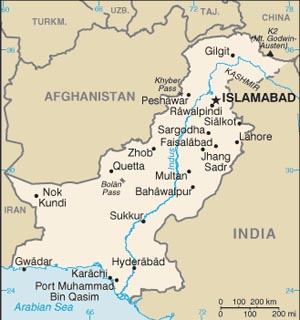A recent investigation by the Associated Press into ten U.S. drone attacks in the tribal regions of Pakistan concluded that about 70 percent of those killed were militants, countering common Pakistani perceptions that the majority killed are civilians.
 Reporters from the Associated Press conducted an on-the-ground investigation of 10 of the deadliest drone attacks in the past 18 months and was told in interviews with about 80 villagers that of at least 194 people killed in the attacks, at least 138 were militants. The remaining 56 were either civilians or tribal police.
Reporters from the Associated Press conducted an on-the-ground investigation of 10 of the deadliest drone attacks in the past 18 months and was told in interviews with about 80 villagers that of at least 194 people killed in the attacks, at least 138 were militants. The remaining 56 were either civilians or tribal police.
Approximately 38 of those 56 civilians were killed in a single attack on March 17, 2011. U.S. officials familiar with that incident said the group targeted were heavily armed suspected militants. But villagers and Pakistani officials said the missiles hit a community meeting held to resolve a mining dispute, killing four Pakistani Taliban fighters and 38 civilians and tribal police.
The Bureau of Investigative Journalism, has published the most comprehensive study of casualty figures in the drone war. It said strikes have killed between 2,383 and 3,109 people, of whom 464 to 815 were civilians, implying militant casualties 70-80 percent of the time.
But a policy of military aggression which has killed over 800 innocent men, women, and children in a country that is not a declared war zone is still criminal. The drone program is technically classified and the U.S. government refuses to make any information on casualties public, so somewhat sketchy reporting in a difficult area is all that is available. And this methodology could very well result in an under-counting of actual civilian deaths, especially since journalists are not typically allowed in the area.
The Bureau also has reported that many strikes have deliberately launched follow-up attacks, killing people “who had gone to help rescue victims or were attending funerals.” This is clearly a war crime regardless of the overall share of civilians the broader drone war kills.
Even beyond the consistent civilian fatalities the drone war causes over time, it rests on very shaky legal ground anyways. As Naz Modirzadeh, Associate Director of the Program on Humanitarian Policy and Conflict Research (HPCR) at Harvard University has said, “if it is not in a situation of armed conflict, unless it falls into the very narrow area of imminent threat then it is an extra-judicial execution. We don’t even need to get to the nuance of who’s who, and are people there for rescue or not. Because each death is illegal. Each death is a murder in that case.”


